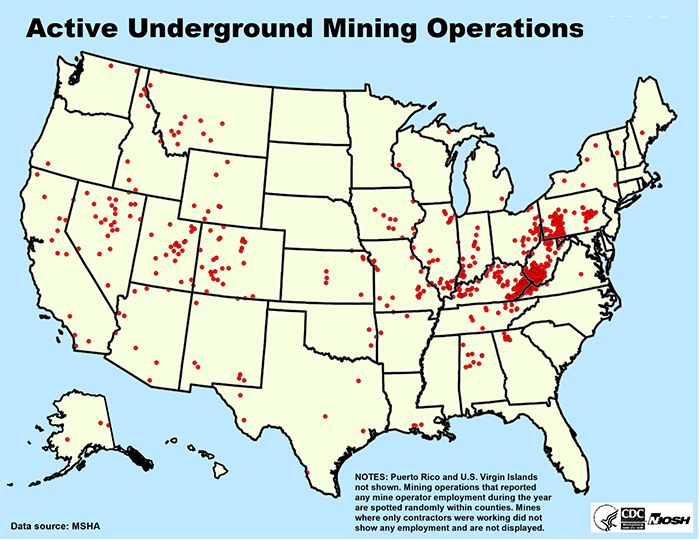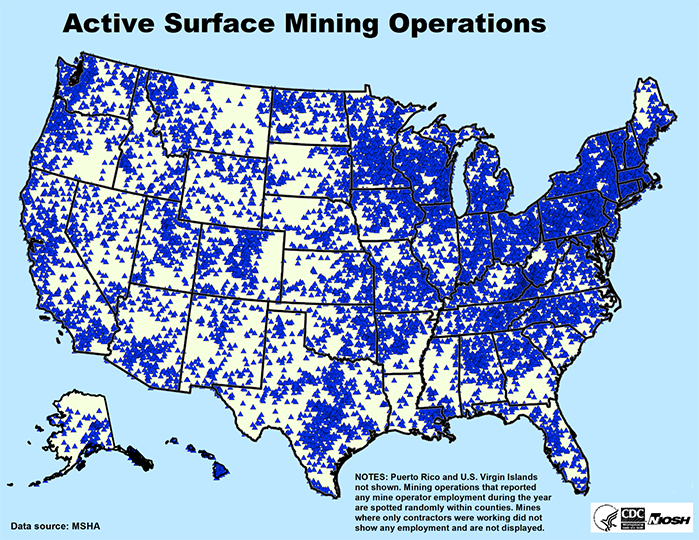1.3.2: Where Are All of These Mines? Continued
In this lesson, I want you to look at a few additional representations. The Mineral Commodity Summaries are published on an annual basis. This report is the earliest Government publication to furnish estimates covering nonfuel mineral industry data. This publication will break out in more detail the major metal and nonmetal (industrial mineral) mining regions by commodity. Spend some quality time reading and analyzing the Mineral Commodity Summaries to view the figures of the relative economic value or significance of mining in specific regions. The economic value of metals mined in the U.S. is shown by region. We can examine industrial minerals in the same fashion, starting this time with the economic value of industrial minerals production by state. We can then go to a more detailed commodity map to see not only the location at which the major industrial minerals are mined, but also which ones are contributing to the economic value within a given state or region.
Finally, I would close this discussion that has focused on the location of mining activity with a different perspective on the location of mines. We now understand the geographic dispersion of mining activity as well as the concentration of mining in certain areas for certain commodities. A different twist to the question, where are these mines?, is: are these mines located on the surface or are they deep beneath the surface? Figures 1.3.9 and 1.3.10 clearly show that most mining occurs in surface rather than underground mines, by a ratio of nearly 15:1. We’ll examine the reasons for this later in the course, but an important point now is that most of these mines are located on the surface.


In this lesson we’ve learned where the fuel and nonfuel minerals are mined, and we’ve developed a better understanding of the extent of mining activities. Soon, we will be ready to look at the life cycle of mining operations and the engineering associated with each part of the cycle. Prior to doing so, there is one last overarching topic to cover, and that is mining in today’s world.